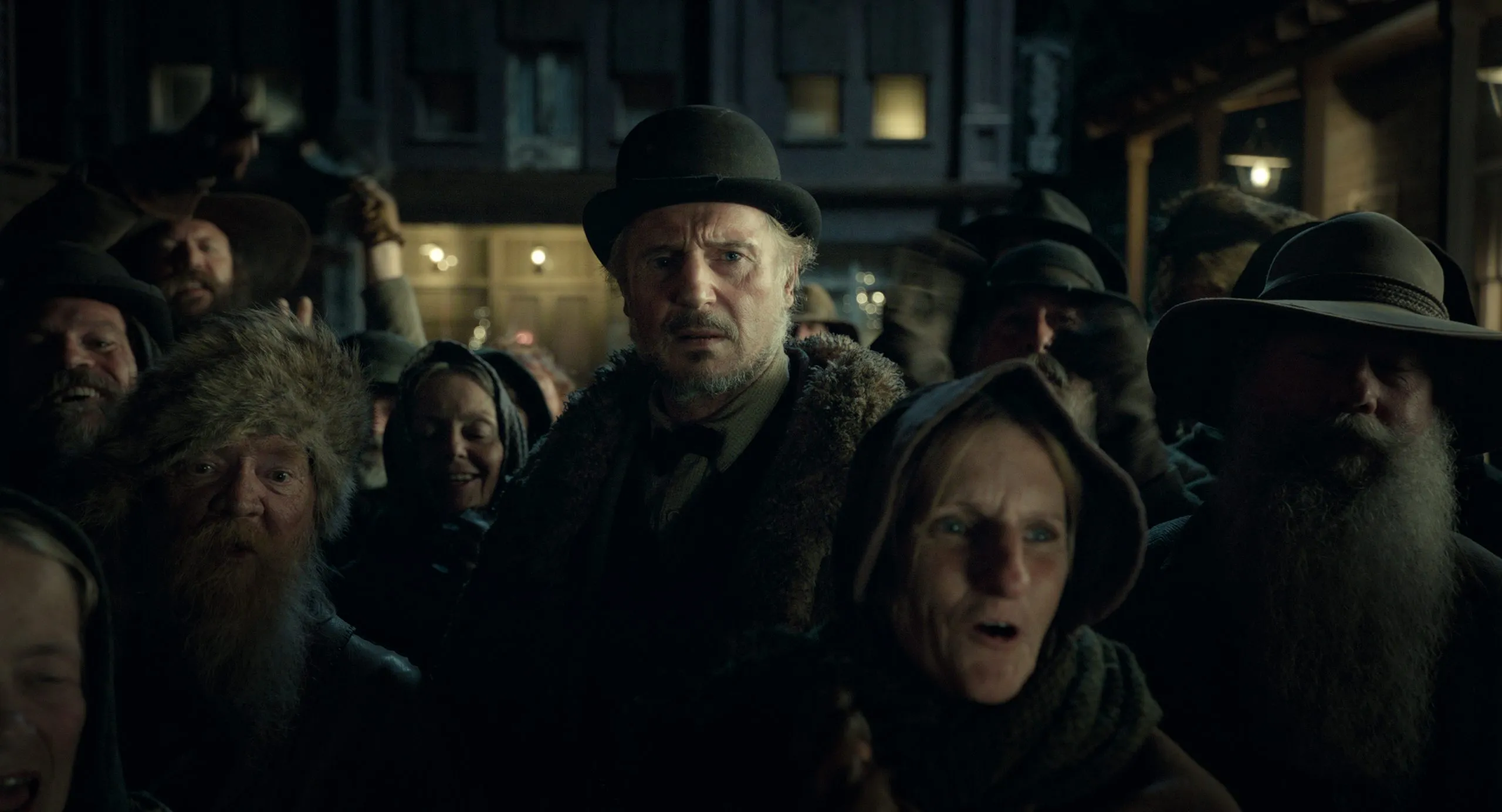There has been some confusion about whether the series of filmed tales joined together under the title The Ballad of Buster Scruggs and just released for public view is a movie at all. It was made for Netflix, and the original reporting about the project in 2017 said this Coen brothers production was going to be a TV series somewhat in the mold of the dreadful show Woody Allen made for Amazon for which he received a reported $80 million. It was called Crisis in Six Scenes, and now that you know it, forget it immediately.
Indeed, the idea of a six-part western anthology seemed so defiantly pointless a storytelling gambit in the second decade of the 21st century that one hoped Joel and Ethan Coen were taking Netflix for the same kind of ride—cashing in extravagantly on the capital of their reputations with junk they’d stashed in the bottom drawer because the streaming service wanted their imprimatur to send a signal to the world it was willing to do whatever it might take to work with great artists in its relentless pursuit of eyeballs.
Well, the Coens say their six-part compendium is a movie and they always intended it to be a movie, but they are notoriously unreliable interviewees whose rare conversations with the media are full of trickery and guile. In the end, the running time of The Ballad of Buster Scruggs comes to 2 hours and 4 minutes of actual storytelling. The first tale runs all of 15 minutes, the second only 12. And these are perfect lengths, because both segments are live-action cartoons, very funny ones at that, and over and done in just the right amount of time. It’s possible Netflix decided this thing couldn’t be released as a series. Who knows?
What we do know is that the Coens insisted The Ballad of Buster Scruggs be released in theaters as well as online. Netflix has done so in what appears to be an extremely grudging fashion, stashing it in just a few theaters in a handful of cities for very limited runs. Netflix says openly that its own model has nothing to do with conventional Hollywood measures of success and that it produces work to serve its online audience through its proprietary algorithm.
The act of dumping The Ballad of Buster Scruggs seems foolish on first blush; after all, the last time the Coens made a western it was True Grit, which grossed $171 million. But Netflix has bigger fish to fry. After all, why make a few million in profit at the box office when your company is in debt to the tune of $12 billion? (I say a “few million” because Buster Scruggs is too offbeat a piece of work to have been anything more than an art-house success.)
I decided to view Buster Scruggs twice. I watched it on streaming first and then went to see it in a theater. And here’s what I have to say about that.
I found it difficult to surrender myself to the Netflix stream, in part because I watched it the way I watch anything online now. I saw some of it on my phone on a plane, some of it on an iPad in a hotel room, and some of it on my big-screen TV at home. I was distracted by the things that distract one when watching things in this fashion, and my attention wavered when I was trying to focus on it.
Then I went to the theater. Having sat through Buster Scruggs once, albeit in multiple sittings, I knew the plots, knew the characters, and knew the performances. Only I didn’t. Seeing it on a big screen in a dark auditorium was a magical and spellbinding experience. The Ballad of Buster Scruggs has a dark and deep beauty to it, and its stately pacing allows you to sink deep down into it.
The defiant nihilistic silliness of the opening chapter, in which Buster Scruggs proves to be both a cheerful singing cowboy and a crazed psychopath, gives way to the sensational deadpan joke of the second part, in which a hapless bank robber keeps finding himself at the end of a noose. The black humor turns positively obsidian in the third part, with Liam Neeson as the impresario of a traveling theatrical troupe made up of a single performer—a gorgeous-voiced boy with no arms and no legs who declaims Shakespeare and Shelley and Lincoln beautifully but is drawing smaller and smaller crowds by the day.

Then we find ourselves in a gorgeous valley with a lone prospector played by Tom Waits who is sure he has found a motherlode of gold. His good cheer and serious intent make you dread the bad news that will come his way, and it does, but it’s not what you think. The same is true in the fifth segment, “The Gal Who Got Rattled,” a tale about a lonely young woman alone in a wagon train going to Oregon that compresses a novel’s worth of story into 25 minutes. And finally, we get the classic “six characters on a stagecoach,” only this one is more Sartre than John Ford.
At the risk of sounding horribly pretentious, I’d say the subject here is nothing less than the remorselessness of the universe and the mostly hapless efforts men undertake to (as we Jews say on Yom Kippur) “avert the evil decree.” The Coens speak of it in six different ways in six different styles from six different perspectives, and the overall result is nothing short of magnificent.
Since you will probably not be able to see it in a multiplex, and since it was in some sense made to be seen on Netflix, my advice is to do what you can to simulate the theatrical experience. Watch it all at once. Turn the lights off. Put your phone away. Help The Ballad of Buster Scruggs work its magic on you. It will be worth the effort.

